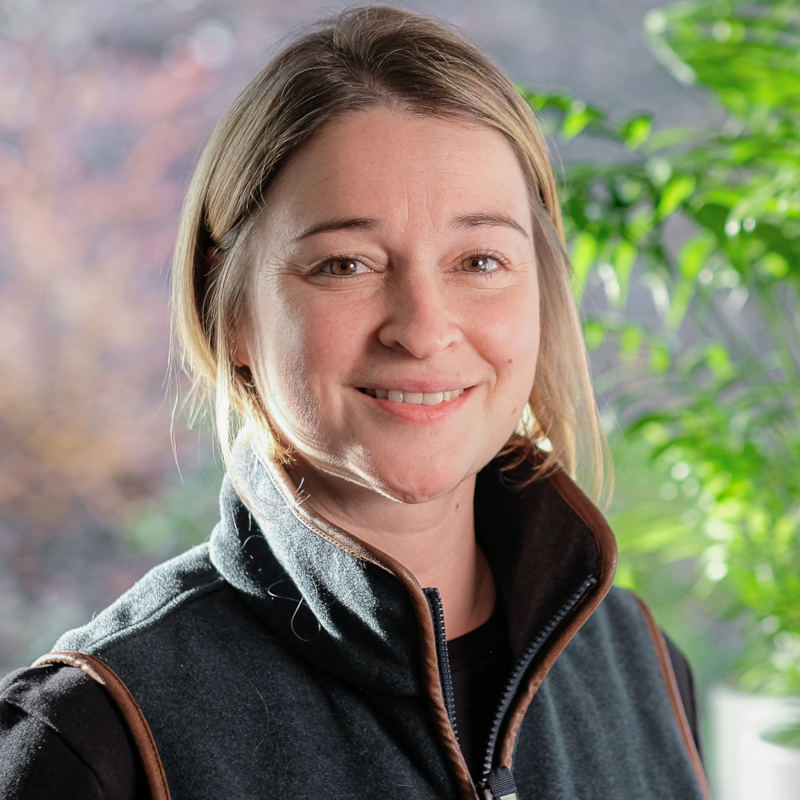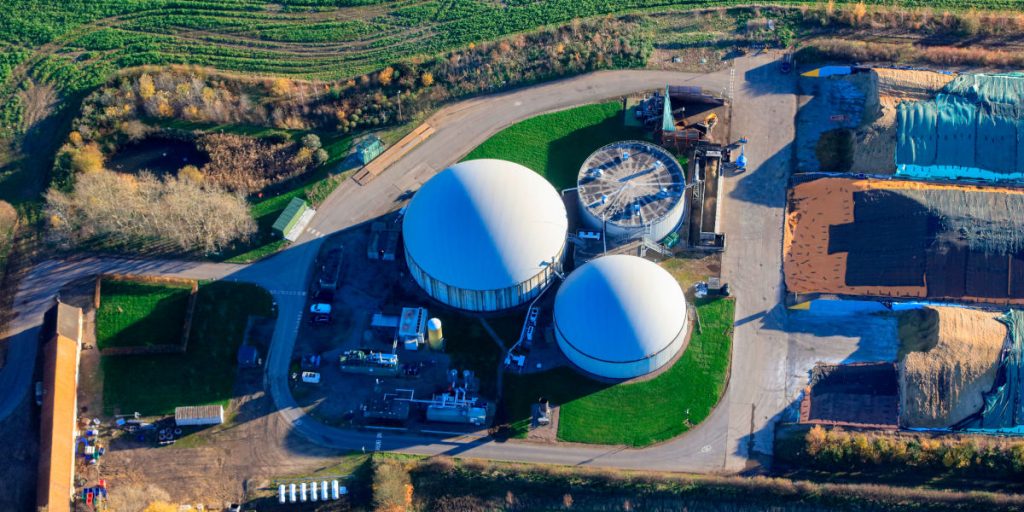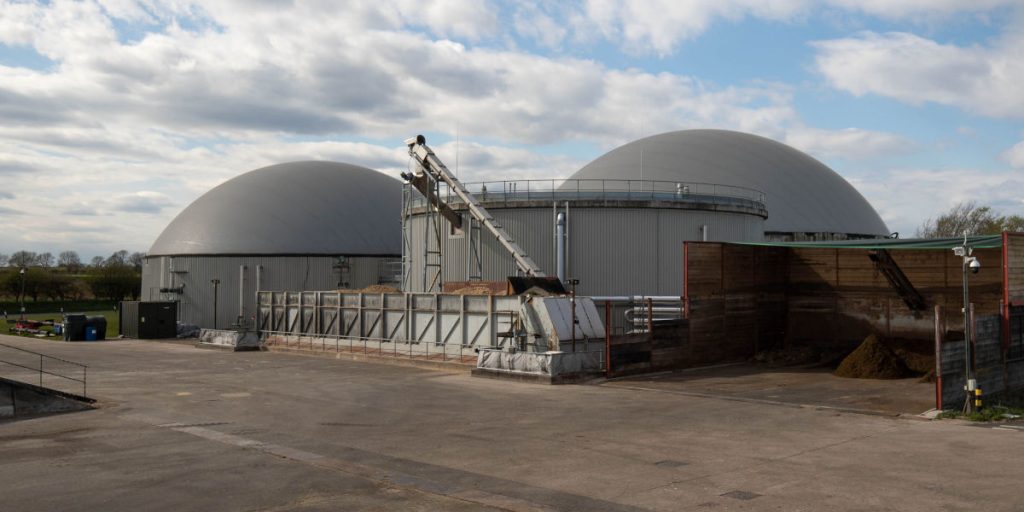[ad_1]
Biogas offers a renewable alternative to fossil fuels and is now being produced in quantity and made accessible via the grid, by organisations such as Future Biogas. This innovation promises to be a gamechanger for companies such as glasshouse growers looking for affordable, fossil-free fuel. It will also provide a stable revenue for farmers growing bioenergy crops within the arable rotation.
Dr Becky Wheeler, Business Development Director at Future Biogas, says the company has spent the last ten years optimising the technology and is now on a growth trajectory following significant investment from 3i Infrastructure in 2023.
Developing a body of knowledge
Future Biogas was founded in 2010 by Philipp Lukas and his father who had a vision to create an alternative source of gas from renewables. They built and constructed a number of anaerobic digestion (AD) facilities, developing a body of knowledge about the gas and how to optimise the technology. Future Biogas currently has twelve plants in its portfolio.

Part of this learning was that the quality and consistency of feedstock is critical.
Although smaller AD plants do work well at a farm level and municipal waste is used successfully at many commercial operations, Future Biogas operates plants fed with bioenergy crops, predominantly from farms located in arable regions across the eastern side of the UK.
Bioenergy crops are fermented in the AD process, producing gas comprised of biogas (upgraded to biomethane) and carbon dioxide. The gas is split through a molecular sieve and the methane element can be used for heat and energy.
Since 2010, Future Biogas has become one of the largest biomethane producers in the UK.
The company was acquired in February 2023 by 3i Infrastructure, and this injection of finance has enabled Future Biogas to invest in a new generation of AD plants, moving away from government subsidies.
A new market for farmers
Producing biogas at scale has created a new market for farmers. Future Biogas has contracts for bioenergy crops, such as maize, which can be grown as a break crop within the rotation.
Becky explains what this means for farmers: “We are currently procuring about half a million tonnes of crop a year across Yorkshire, Lincolnshire, and Norfolk. Bioenergy crops, such as maize and rye, offer farmers a diversification opportunity, as they fit well within the arable rotations more often found across the east of England.
“Longer term contracts enable farmers to plan well in advance and offer stability. This also supports longer-term land management strategies that are needed to improve sustainability.
“We have been working with our farmers to trial some more novel crops such as the perennial silphium, to various degrees of success because it’s very hard to establish. We are exploring the use of companion cropping and herbal lays, and over the years, we’ve seen the benefits of using maize to help control black grass. Therefore, we are supporting innovation both on-farm and through our own labs.
“There is also the opportunity to return solid and liquid digestate to the farm, to provide a source of organic matter.”

Building soil health
The importance of the soil microbiome for soil health has become more widely recognised. Although Future Biogas has a biology department dedicated to the microorganisms that support the AD fermentation process, the company would like to expand R&D in the field environment.
Becky is a soil scientist, so it is a subject of great interest to her: “Our project life cycle analysis focuses on carbon emissions and reducing the carbon intensity of our gas products, which includes the feedstock – so our feedstock team are looking at soil health, and farming practices that better support the soil microbiome. We do not currently have any trials in the ground, but we will certainly be looking at this in the future.”
Supporting a reduction in fossil fuels for Scope 3
As part of the Taskforce for Climate-Related Financial Disclosures TCFD, companies have to account for their Scope Three emissions and the use of fossil fuels on-farm is a major contributor. This means large businesses will inevitably analyse the sustainability of their supply chain.
Becky explains that currently the biomethane produced in Future Biogas’ plants is injected directly into the grid, except for one site that powers Combined Heat and Power Units (CHP) to generate electricity.
Many vegetable and fruit producers use electric-powered CHP for their glasshouses, so AD has the potential to provide a fossil fuel alternative, making them more attractive to scope 3-conscious retailers.
Future Biogas has recently signed a 15-year partnership with AstraZeneca, who will be using biogas as part of their strategy to decarbonise its manufacturing process. It is the UK’s first industrial-scale agreement for unsubsidised green gas.
Becky continues: “The model we’ve built in partnership with AstraZeneca is a good precedent for glasshouse producers as it is fossil free; it shows that you don’t necessarily need to co-locate an AD plant to tap into biogas. Green gas off-takers can also claim full additionality as the gas wouldn’t be produced without them.”
The agri-food industry also uses CO2 for carbonated drinks and other purposes, which also currently comes from the production of fertiliser.
Becky says that this is a potential opportunity for the company, but the focus currently is to permanently sequester the carbon dioxide produced within geological deposits, and this is part of its subsidy-free strategy.
“Come and talk to us”
“We have several new AD plants in the pipeline, so there are opportunities for growers, in particular those looking to partner with us on a journey to more sustainable land management. We invite farmers to come to us direct to discuss their needs.”

Source link


